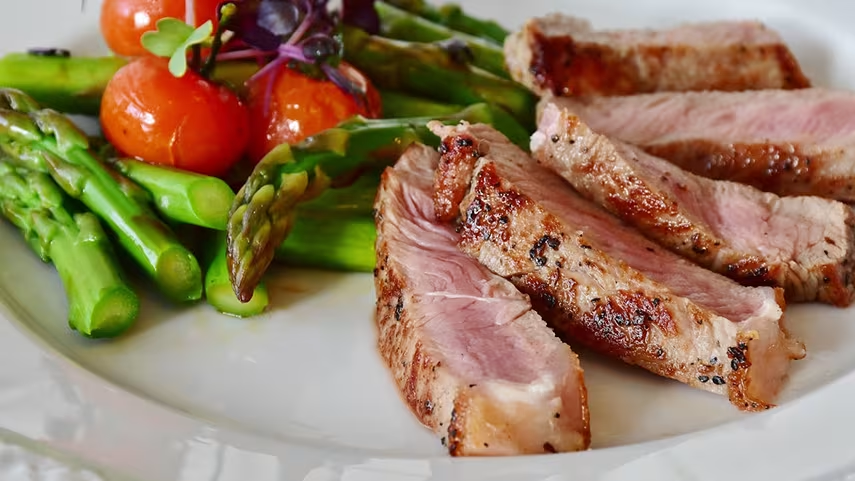Working out fasted is not ideal for performance or fat burning. In fact, if you're getting lighter on the scale—but not where it counts. Burning fat. You feel smaller, but not tighter. Maybe even your weight is going down, but your body composition? Not improving.
What gives?
This is where the 30-30-30 theory steps in—and why it might explain exactly what’s going wrong.
Here’s the Problem: Your Body Is Eating Muscle, Not Fat
When you fast and go hard in the gym, especially first thing in the morning, your blood sugar is low. That means your body is starved of quick energy, especially glucose.
Now, here’s the kicker: Fat is slow-burning fuel.
Your body can’t break it down fast enough to power intense exercise. So what does it do? It goes after lean muscle.
Why?
Because muscle breaks down into amino acids, which can be converted into glucose (through a process called gluconeogenesis).
Your body wants sugar, and muscle provides it faster than fat.
This means:
- Cortisol (stress hormone) helps us wake up naturally rises. (It will come down when you eat)
- Cortisol also rises with workouts
- Cortisol rises with caffeine
But you're also losing muscle, which slows your metabolism, flattens your physique, and keeps you from burning fat long-term.
Enter the 30-30-30 Theory
The 30-30-30 protocol was made popular by Tim Ferriss and others as a way to shift your metabolism and protect muscle while burning fat.
Here's how it works:
- 30 grams of protein
- Within 30 minutes of waking
- Followed by 30 minutes of low-intensity cardiovascular exercise. You could also do weight training
Let’s break it down.
Why 30 Grams of Protein Within 30 Minutes of Waking?
When you wake up, your body is in a catabolic state. It’s already breaking down muscle to stay fueled.
Adding fast-digesting protein (think eggs, a shake, lean meat) gives your body:
- An immediate source of amino acids
- A signal to stop muscle breakdown
- A small insulin rise that supports metabolism and satiety
This primes your body to burn fat instead of muscle throughout the day.
Why 30 Minutes of Cardio After Protein?
This isn’t high-intensity interval training. It’s low-intensity cardio. Think walking, incline treadmill, cycling, or brisk walking outdoors.
Why?
- With protein already in your system, your body doesn't need to tap into muscle for fuel.
- You stay in a fat-burning heart rate zone (around 60–70% max heart rate).
- You keep cortisol in check (overtraining fasted spikes it).
This is how you shift from burning yourself out to actually burning fat.
Why “Hammering Yourself” While Fasted Backfires
If you're skipping breakfast, hitting a high-intensity workout, and wondering why the fat isn’t budging…you might be:
- Spiking cortisol (stress hormone)
- Losing muscle instead of fat
- Creating blood sugar crashes and cravings
- Slowing your metabolic rate over time
Fasted training can work—but it’s a tool, not a default. For many people, especially those who are busy, stressed, or over 35, it's a recipe for burnout and poor results.
The Smart Shift: Burn Fat Without Burning Muscle
The 30-30-30 method works because it:
- Feeds your body first (stops muscle loss)
- Energizes your training (supports sustainable cardio)
- Supports fat metabolism (without spiking stress hormones)
And perhaps most importantly, it’s doable.
No crash diets. No unsustainable fasts. Just a simple routine that protects your body and accelerates real results.
Try This Tomorrow Morning:
- Wake up, drink water.
- Get 30g of protein within 30 minutes (shake, eggs, or lean meat).
- Do 30 minutes of low-impact cardio: a walk, stationary bike, incline treadmill.
Do this consistently for 2–4 weeks and notice:
- Less puffiness
- More energy
- Better body composition (even if the scale doesn’t change much)
- Better workouts (less drained, more recovered)
Final Thought: Eat First, Then Burn
If you’re serious about changing your body, the answer isn’t to punish it with more fasting and harder workouts. The answer is fueling it smarter.
The 30-30-30 method might be the metabolic reset you need, not to lose weight on the scale, but to finally lose fat and keep muscle, for good.








